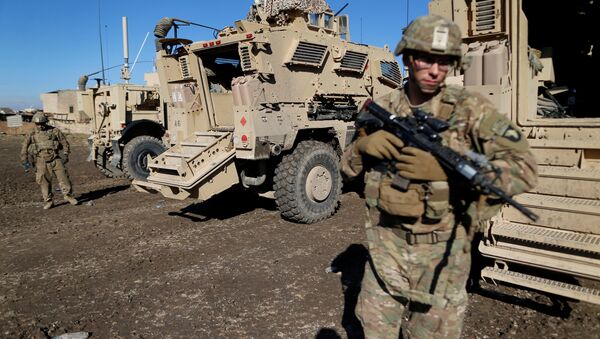Brian Becker and John Kiriakou of Radio Sputnik's Loud & Clear were joined by Greg Mello, executive director of the Los Alamos Study Group, a nuclear disarmament advocacy organization, and by Jim Kavanagh, progressive journalist and editor of ThePolemicist.net.
"The big takeaway is that again we have an increase that's beyond even what Trump asked for," said Kavanagh. "Spending for the military is essentially unlimited, and it demonstrates that Trump, despite what anybody thought, despite whatever he said, is part of the military-industrial complex. He said he was going to cut back on the wars — but he wants to increase military spending? This is going to create more and more tension, and everybody's behind it."
"It demonstrates the tenacity of the military-industrial complex in the United States: these bills are structured in a way that give contracts throughout the country and almost every congressional district hundreds of bases. Thousands of contracts are issued every day and it becomes very difficult for any congressperson to vote against it, because they are voting against pork that's coming into their district. Essentially this is military Keynesianism."
Kavanagh went on to say that, despite the much-touted $700 billion figure, the actual military spending of the US federal government was more like a trillion dollars, as a great deal of defense spending is done outside the Department of Defense.
Mello agreed and elaborated: "it's at least a trillion dollars because it includes the nuclear weapons programs of the Department of Energy as well as the DoD. Plus the interest, that's very important; plus [the Department of] Homeland Security, plus the military programs at the State Department. It used to be about half of NASA was military related. So you add it all up and it's really a huge amount of money, it's more than a trillion dollars, and it's really a majority of the discretionary spending of the United States government."
"This raises questions of whether this is the military-industrial complex influencing the government, or is it really the bulk of the government itself?"
Kiriakou pointed out what he saw as an overlooked issue with the NDAA: the way it was passed. It was passed by voice vote, meaning senators did not have to make their support or opposition explicit — and indeed, most did not. He also added that the bill may actually be illegal, as it violates the 2011 Budget Control Act that was supposed to cap military spending at about $549 billion to reduce the budget deficit.
Kavanagh was also concerned with a tenet of the bill discussing arms contracts with Ukraine and a further buildup of military resources along NATO's eastern border with Russia, and how those measures could affect US-Russia relations. "The presence of NATO on the Russian border is very provocative. These are policy decisions that are centrally hidden inside the budget: they're not just budgetary decisions, they're policy decisions that are designed to provoke some kind of conflict with Russia and to constrain the president and the executive branch from acting independently of the drive for conflict with Russia."
Mello pointed out that not only does the US have the largest military budget on the planet, but that that budget was equal to those of the "[the next nine largest defense spending] countries before they add up to as much as we are spending."
"We spend roughly about 10 times what Russia spends on its military. When you think about it, spending at this level, it precludes many of the things that modern society would demand of a First World country. It precludes a good education system. It precludes substantial investments in renewing our infrastructure. It precludes proper response to the existential climate emergency."







